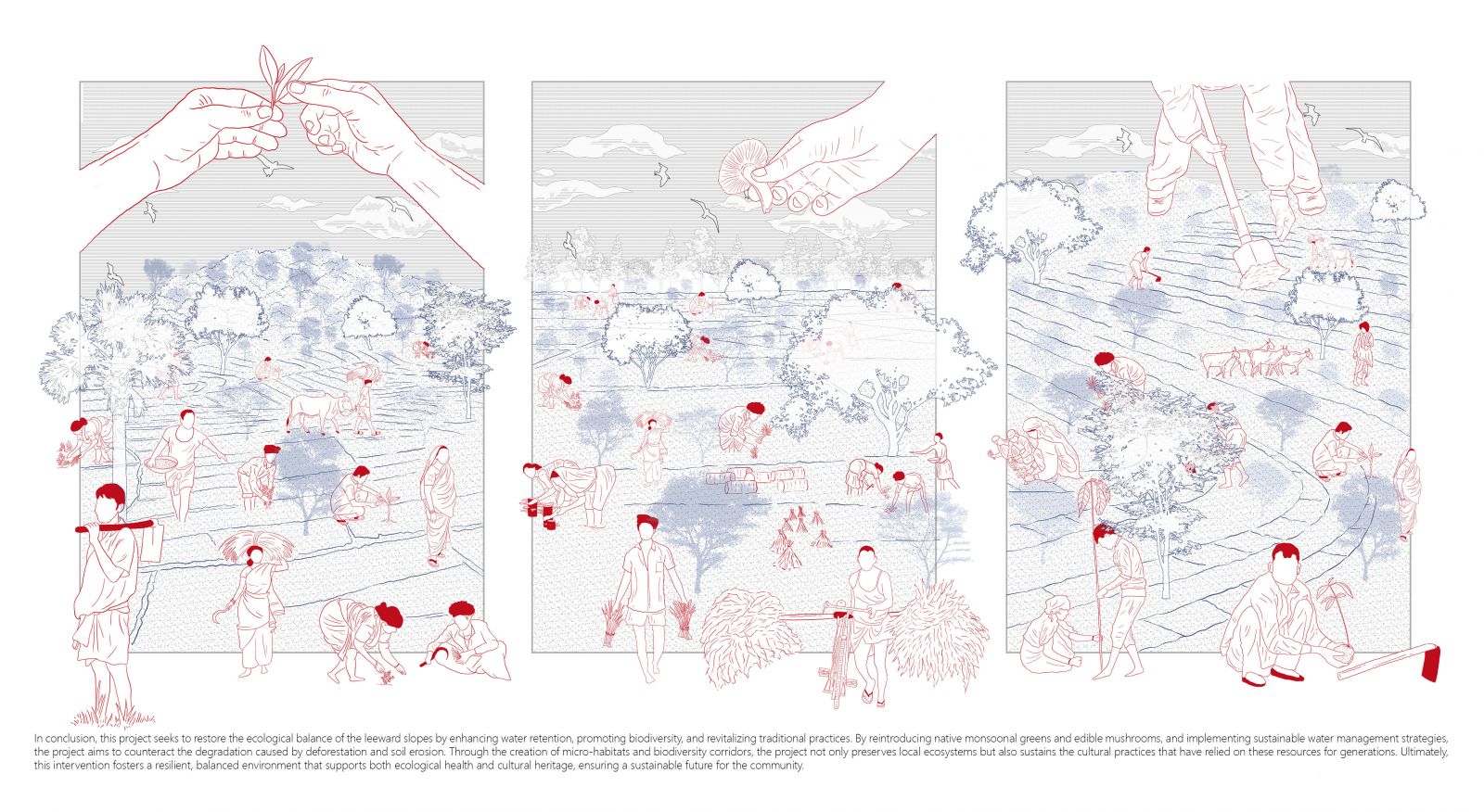Your browser is out-of-date!
For a richer surfing experience on our website, please update your browser. Update my browser now!
For a richer surfing experience on our website, please update your browser. Update my browser now!
This project aims to bringing back monsoonal greens and mushrooms from the eroded leeward slope of the village through re-wilding water retention and biodiversity strategies in order to revive traditional practice. The site has experienced extensive deforestation, soil erosion, and encroachment on water bodies have diminished biodiversity and disrupted habitats essential for native flora and fauna, including monsoonal greens and mushrooms. To address this, cascading shallow trench systems can be implemented to retain water, reduce erosion, and recharge groundwater, creating moisture-rich zones for ecological regeneration. Micro-habitats will be established to support the growth of edible and native mushrooms, while native monsoonal greens will be reintroduced to stabilize soil, enhance biodiversity, and sustain traditional foraging. These interventions will perhaps form a biodiversity corridor connecting the leeward slopes and paddy fields, fostering a resilient ecosystem. By enhancing water retention, soil health, and habitat availability, the project aims to restore ecological balance, preserve cultural practices, and ensure sustainable land use for future generations.
View Additional Work








